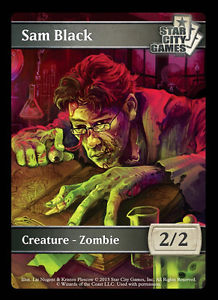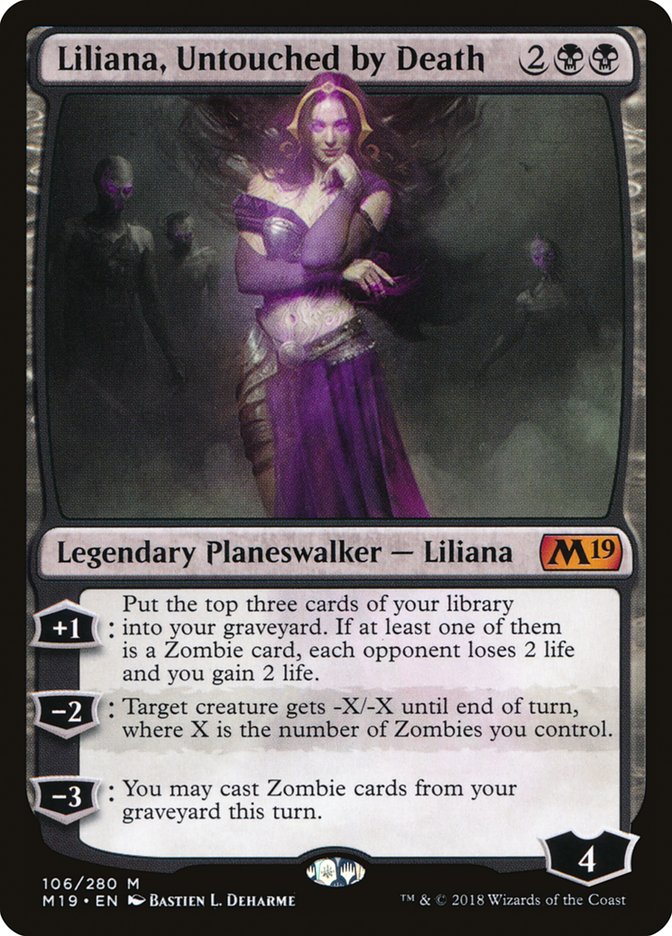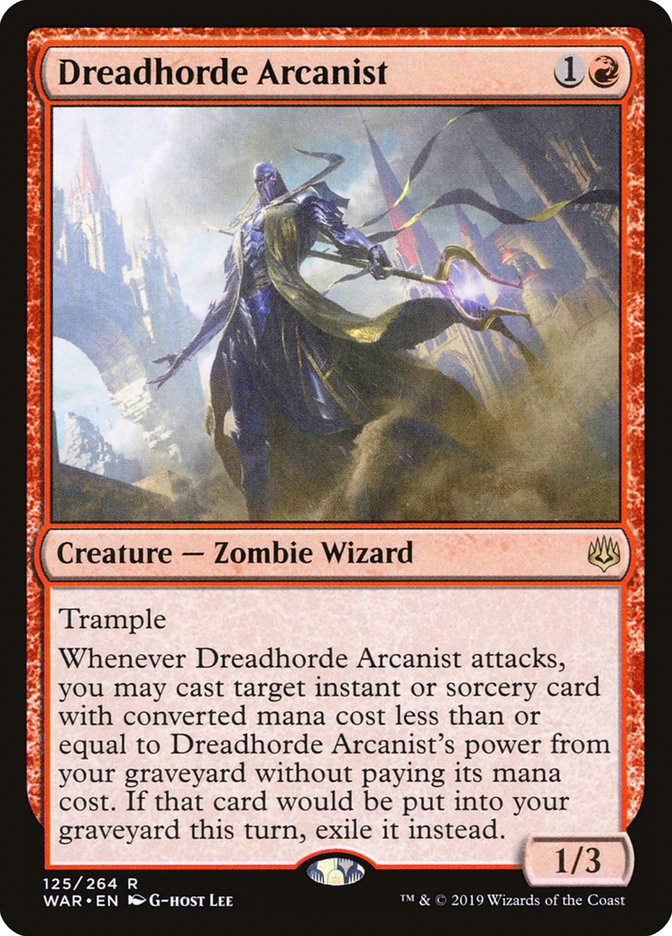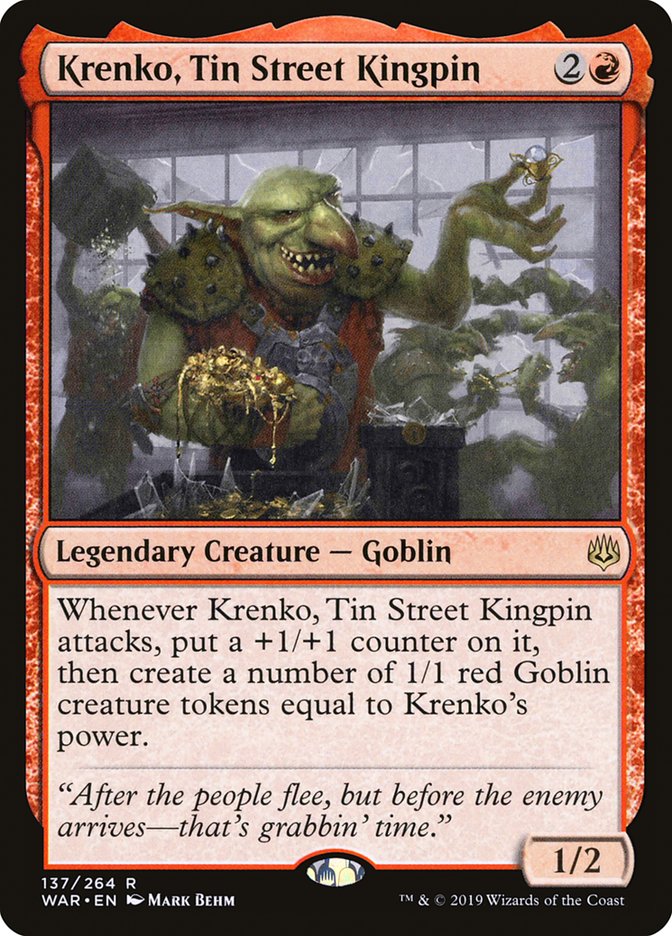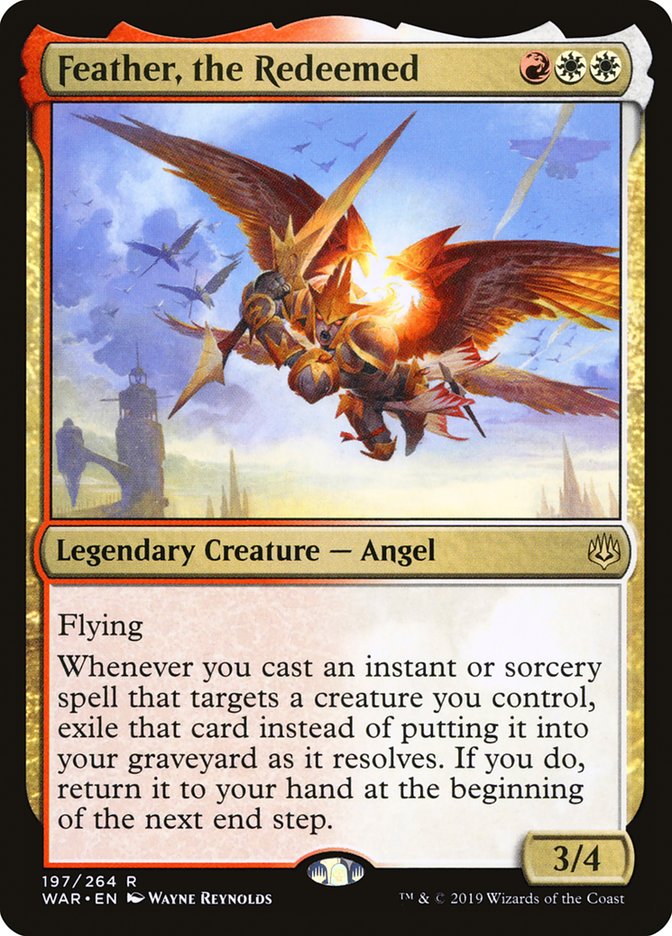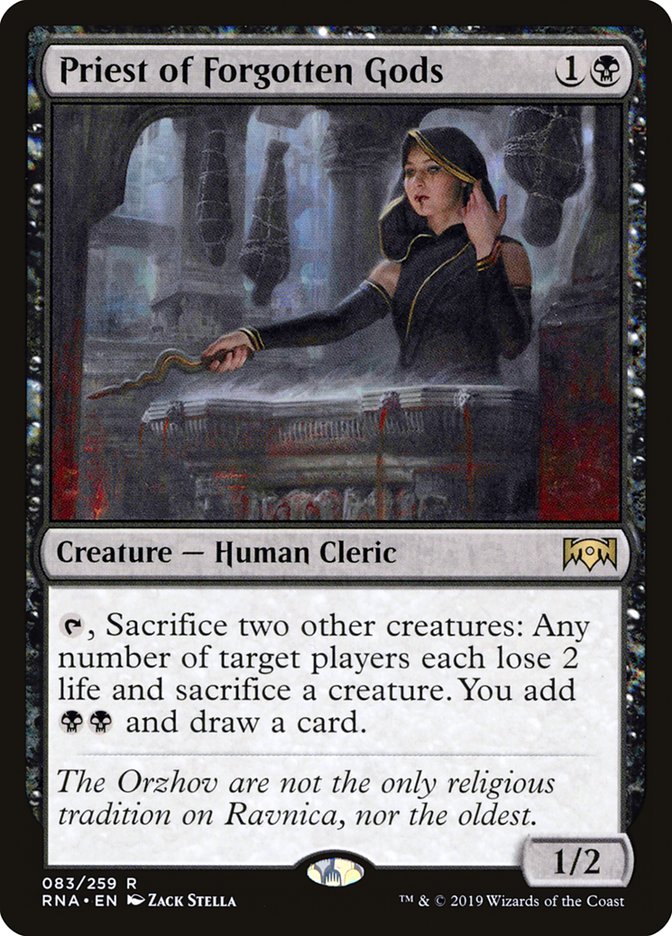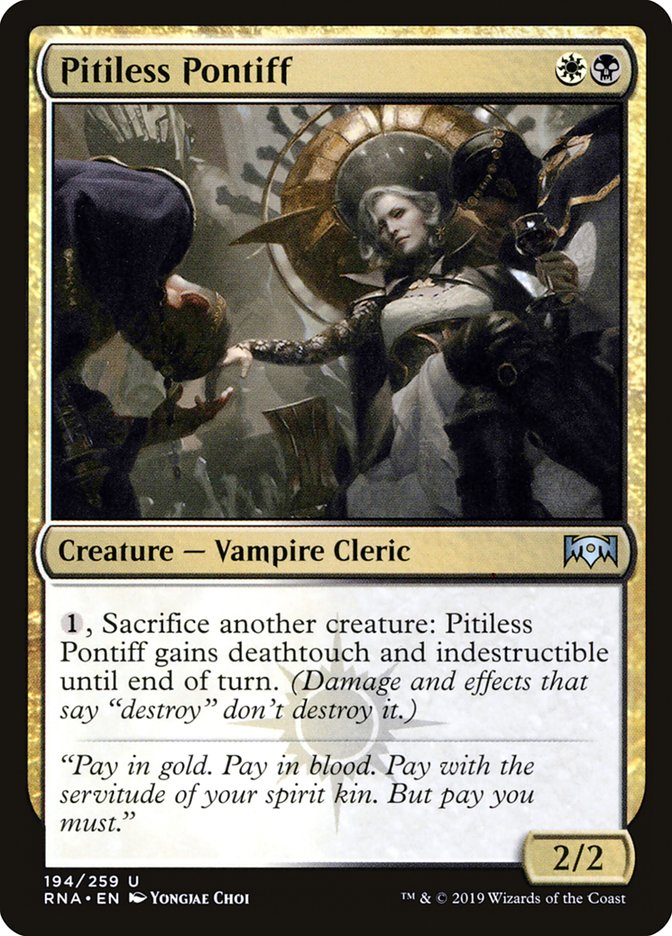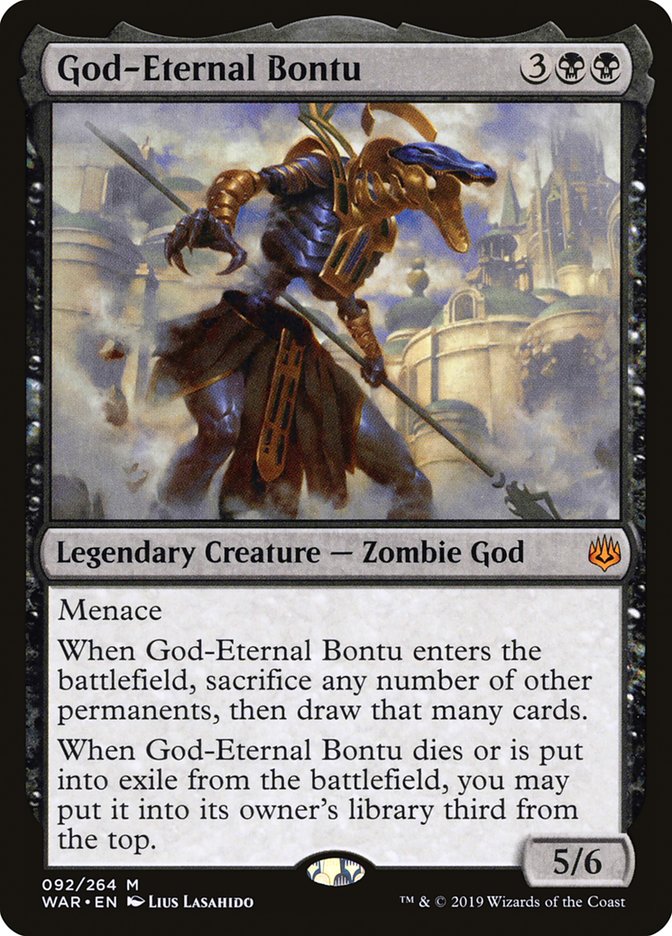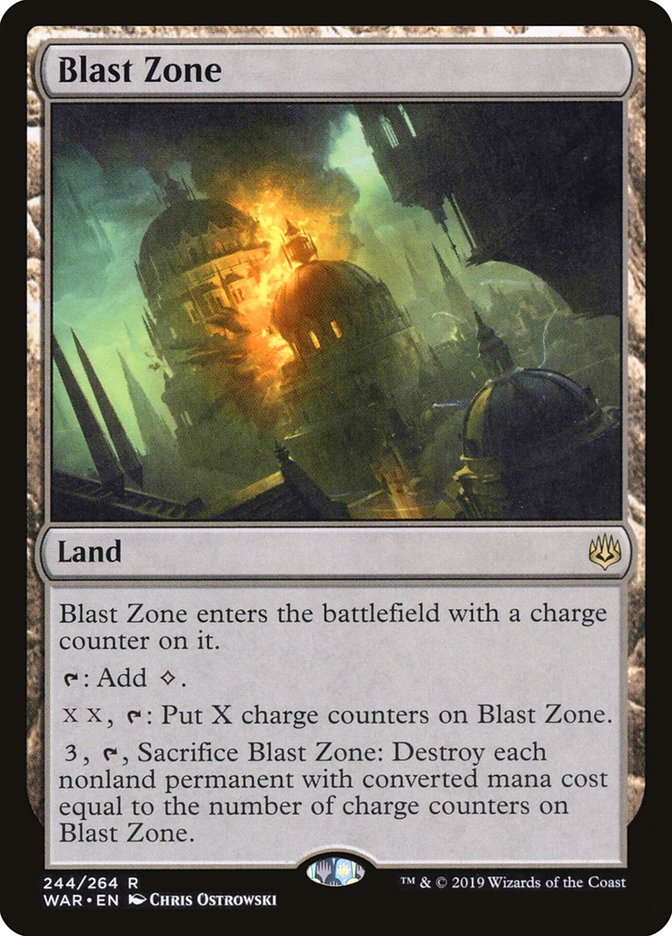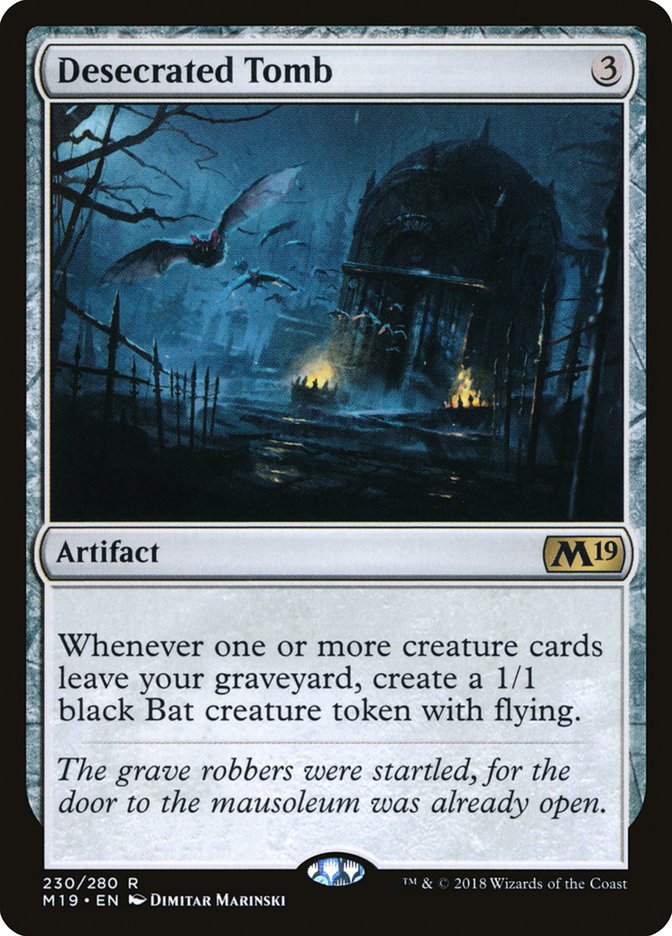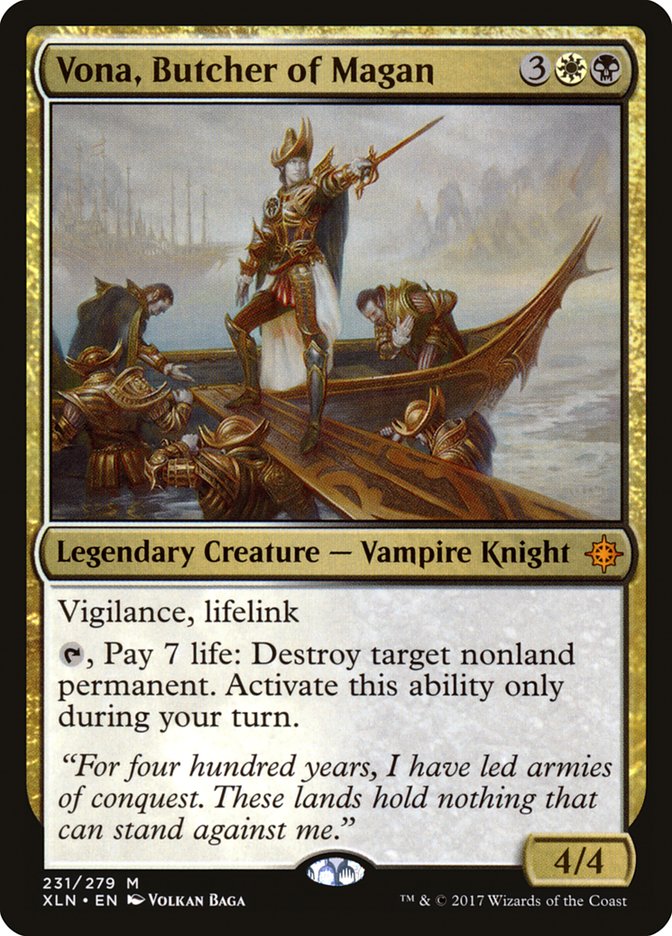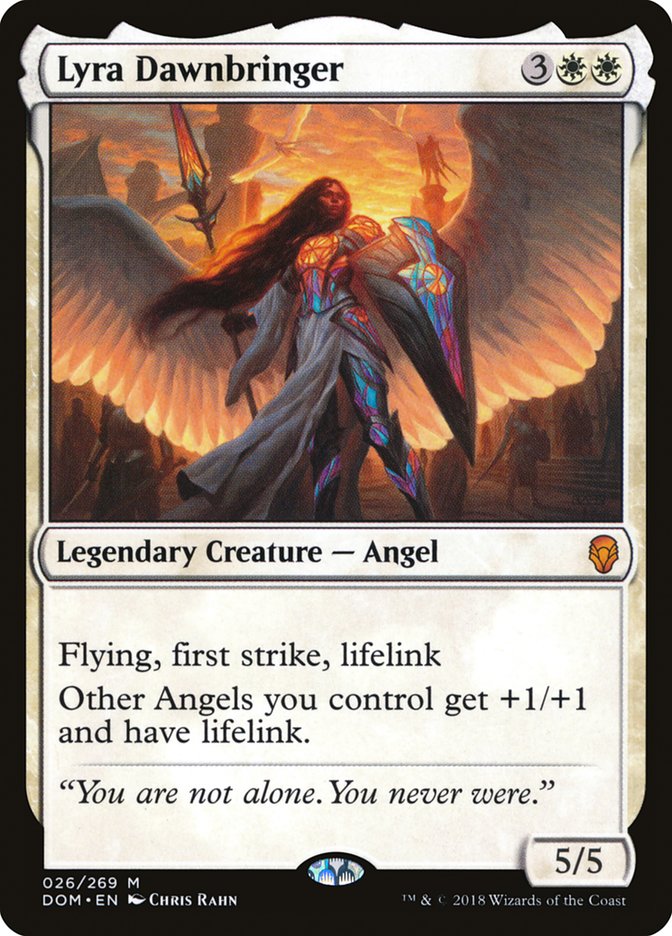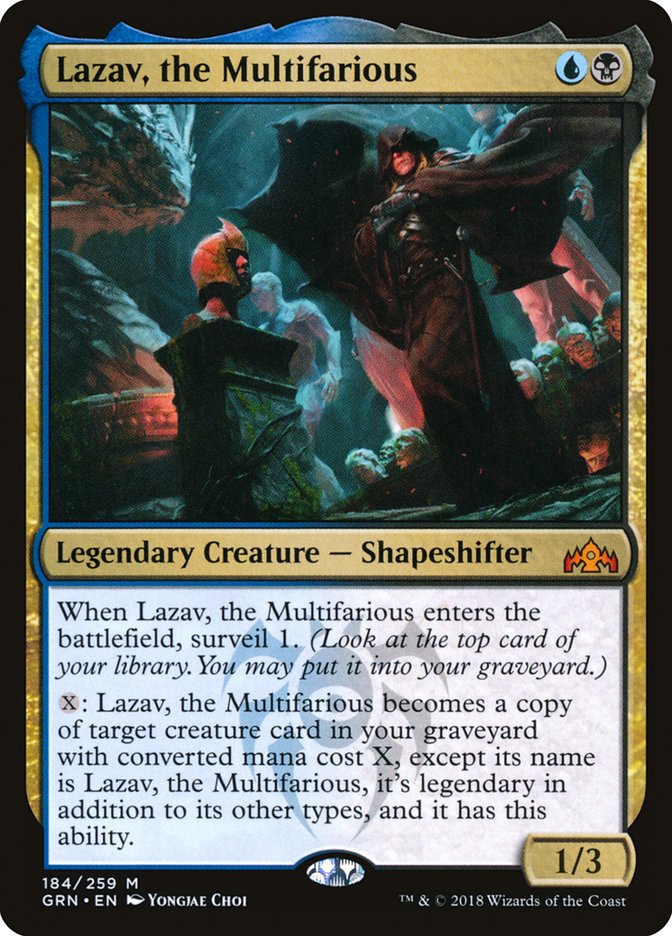We’ve had a handful of Zombie tribal cards in Standard for a long time, but not quite enough to really justify building a deck around. War of the Spark brings an incredible number of cards to the tribe, so there’s a lot to work with, but the direction isn’t clear. Is it an aggro deck? An attrition deck? Is it even a creature deck? None of these things are entirely obvious, so let’s investigate.
We can start with your basic tribal aggro build, a curve of creatures with a lord:
Creatures (34)
- 4 Death Baron
- 4 Diregraf Ghoul
- 3 Graveyard Marshal
- 4 Midnight Reaper
- 2 Judith, the Scourge Diva
- 4 Gutterbones
- 4 Dreadhorde Butcher
- 4 Grim Initiate
- 4 Lazotep Reaver
- 1 God-Eternal Bontu
Planeswalkers (3)
Lands (23)

Gutterbones gets to play as an honorary Zombie because Death Baron doesn’t discriminate against the fleshless. Grim Initiate isn’t great without a way to sacrifice it, but its role here is similar to the role of Hunted Witness in the white-based aggro decks we’ve seen – it’s just trying to build a battlefield presence so that your lords are good. It’s also nice to have cheap Zombies to cast easily with Liliana, Untouched by Death’s -3 ability.
Speaking of Liliana, Untouched by Death, that’s one of the big draws to this deck. It’s easy to overlook a card that has been legal for as long as it has without ever breaking into Standard, but Liliana is entirely limited by the supporting cast of Zombies, and we just haven’t been here before. Liliana provides a clock that doesn’t require a successful combat step, lifegain to offset losing life to Midnight Reaper (and Dreadhorde Invasion) after sideboarding, reasonable removal, and an immediate way to rebuild.
The trick with this kind of deck is that it starts to look a lot worse if you cut some of the creatures for removal, and this doesn’t have any in the maindeck other than Liliana (and some incidental removal with Judith, the Scourge Diva and Dreadhorde Butcher, but it’s hard to use that when you want to), and that might not be a reasonable way to build a Standard deck.
Another way to be proactive with Zombies is to be more of a combo/aggro deck than a synergy deck:
Creatures (18)
- 2 Judith, the Scourge Diva
- 4 Dreadhorde Arcanist
- 4 Dreadhorde Butcher
- 4 Krenko, Tin Street Kingpin
- 4 Feather, the Redeemed
Lands (23)
Spells (19)
Sideboard

It’s tempting to try to play Collision // Colossus with these cards, but the mana doesn’t work and it’s more important to have Feather, the Redeemed as another way to make drawing pump spells reasonable.
The idea is to play like Infect in that you have a lot of creatures that are unusually good to target with pump spells – and these creatures really are quite exceptional – particularly Dreadhorde Arcanist; Krenko, Tin Street Kingpin; and Feather. It’s worth noting the timing on Run Amok: because it can only target attacking creatures, Dreadhorde Arcanist won’t allow you to recast it without another pump spell, since you can’t use it to increase Dreadhorde Arcanist’s power until it’s already attacking. However, it does work fine with Krenko because you can cast it after declaring attackers in response to the trigger, which is the best time to target Krenko anyway to make sure you get some tokens if they kill it in response to a pump spell (though usually they should just not let you attack if they have a removal spell).
The gameplan is just to pressure the opponent enough to create spots where you can resolve pump spells on creatures that create a huge swing, like casting Samut’s Sprint on Krenko. After sideboarding, I’d expect opponents to bring in as much instant-speed removal as they can, so the plan is to remove investment in pump spells in favor of threats that line up well against removal, like Rekindling Phoenix, Seraph of the Scales, and Dreadhorde Invasion, and punish the opponent for playing scared.
Another approach is to build around Cruel Celebrant. As much as having Judith can make these combos more explosive and redundant, I still think there’s a lot to be gained when you can keep to two colors in this Standard format, and Orzhov has the necessary tools here:
Creatures (31)
- 3 Midnight Reaper
- 4 Hunted Witness
- 3 Seraph of the Scales
- 4 Pitiless Pontiff
- 3 Gutterbones
- 4 Priest of Forgotten Gods
- 4 Cruel Celebrant
- 4 Lazotep Reaver
- 2 God-Eternal Bontu
Planeswalkers (2)
Lands (24)
Spells (3)
Sideboard

Priest of Forgotten Gods is doing its normal thing here, taking advantage of extra sources of fodder from Lazotep Reaver and Dreadhorde Invasion. Cruel Celebrant offers enough finishing power to allow you to cut red. Sorin, Vengeful Bloodlord provides lifegain to offset the Midnight Reaper and Dreadhorde Invasion and helps keep your important creatures around. God-Eternal Bontu offers an explosive end-game, a resilient threat, and resistance to flood.
God-Eternal Oketra would play well alongside Bontu here if we found that we needed more power and could afford more expensive threats. I’ve been skeptical of this archetype so far, but I like that this build is less reliant on vulnerable three-mana creatures. Dreadhorde Invasion might be an important addition to this kind of deck as a way to play an early threat that doesn’t get swept by Cry of the Carnarium, and it’s joined by Gideon Blackblade in the sideboard.
This deck is really coming together with ten sacrifice outlets in Priest, Pontiff, and Bontu; seventeen fodder enablers; and seven payoffs that generate additional value when they’re on the battlefield and a sacrifice happens (Cruel Celebrant and Midnight Reaper).
I’m really talking myself around on Dreadhorde Invasion with all these decks, but what if we really lean into the token instead of just trying to let it die while it’s small or playing it as a sideboard card?
Creatures (8)
Lands (25)
Spells (27)

This Zombie-powered control deck doesn’t use planeswalkers, freeing it to take advantage of The Immortal Sun after relying on Dreadhorde Invasion, Search for Azcanta, Treasure Map, and Soul Diviner for incremental advantage. Soul Diviner feeds on counters from Treasure Map, Amass, and ideally Blast Zone.
This deck is full of cards that are great in some matchups and bad in others. Tyrant’s Scorn and Enter the God-Eternals are only effective against creature decks, but it tries to make up for that with cards that are good against control decks like Treasure Map and Commence the Endgame. Still, it will likely be at a disadvantage against opposing control decks, but seeks to shore up that weakness by sideboarding in more copies of The Immortal Sun and ways to help resolve it.
Blast Zone really shines in this deck between the fact that it has few permanents with converted mana costs and how Soul Diviner lets it destroy tokens. Gleaming Overseer stands out as a potentially weak Constructed card, but I think it’s worth giving a chance when you have this many amass cards to protect. After all, Sailor of Means has had a bit of success in Standard.
Thinking about Stitcher’s Supplier and Ashiok, Dream Render, what I really want is some way to get paid for putting a lot of cards in my graveyard. That’s not easy to do in Standard, so this goes a little off the deep end:
Creatures (23)
- 4 Narcomoeba
- 1 World Shaper
- 1 Multani, Yavimaya's Avatar
- 4 Stitcher's Supplier
- 1 Izoni, Thousand-Eyed
- 3 Molderhulk
- 1 Golgari Findbroker
- 4 Glowspore Shaman
- 4 Priest of Forgotten Gods
Planeswalkers (3)
Lands (22)
Spells (12)

Okay, like I said, this one might be a little far-fetched. Mill yourself, and then hit Narcomoeba and Creeping Chill while enabling Molderhulk or World Shaper with Memorial to Folly. I have no idea whether this deck wants any of Lich’s Mastery, Command the Dreadhorde, or Bolas’s Citadel, all of which are remarkably similar here.
While we’re going super-deep, this is also a fairly defensible home for Desecrated Tomb.
I’m really not sure if this is enough enablers for this kind of deck or if it would really work at all, but I’d certainly like to believe it would.
This last deck isn’t really a Zombie deck in any proper sense, but it does involve creatures coming back from the graveyard, so it’s close enough in spirit:
Creatures (15)
- 1 Vona, Butcher of Magan
- 1 Lyra Dawnbringer
- 3 Rona, Disciple of Gix
- 2 Isareth the Awakener
- 3 Lazav, the Multifarious
- 4 Fblthp, the Lost
- 1 Massacre Girl
Planeswalkers (10)
- 1 Karn, Scion of Urza
- 1 Teferi, Hero of Dominaria
- 1 Kaya, Orzhov Usurper
- 2 Liliana, Dreadhorde General
- 2 Teferi, Time Raveler
- 2 Ashiok, Dream Render
- 1 Ugin, the Ineffable
Lands (24)
Spells (11)

I just can’t get over wanting to play Mox Amber with a bunch of awesome legends and planeswalkers. Is that so wrong? What does this deck do? I don’t know, probably everything.
I don’t know if this is good, but it certainly seems plausible to me. I think this deck has a reasonable curve, an acceptable amount of interaction, a lot of powerful cards, and seventeen cards that let Mox Amber ramp you to five mana on Turn 4, which isn’t necessarily that exciting, but looks like it can do some powerful things here, especially if you have two of them and you can cast Liliana, Dreadhorde General on Turn 4.
Vona and Lyra are there so that you have exciting things to copy with Lazav. It’s not particularly important that they’re legends; I just wanted to be able to have Lazav turn into a large lifelink creature with good abilities.
So, there you have it, a Zombie* deck (tribal synergies not guaranteed) for each black color pair and then some. Am I “Zombie Guy?” I don’t know. I just like value.
